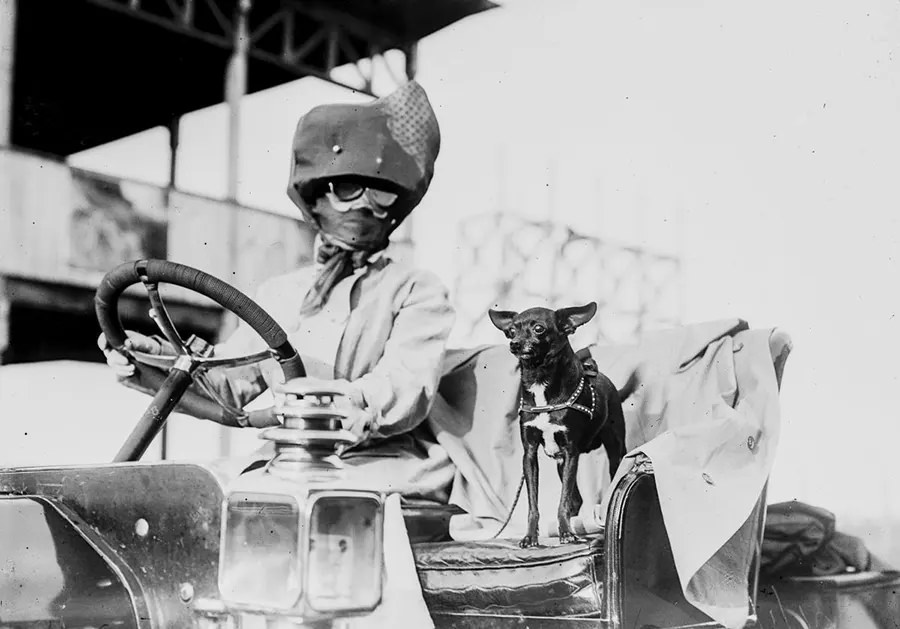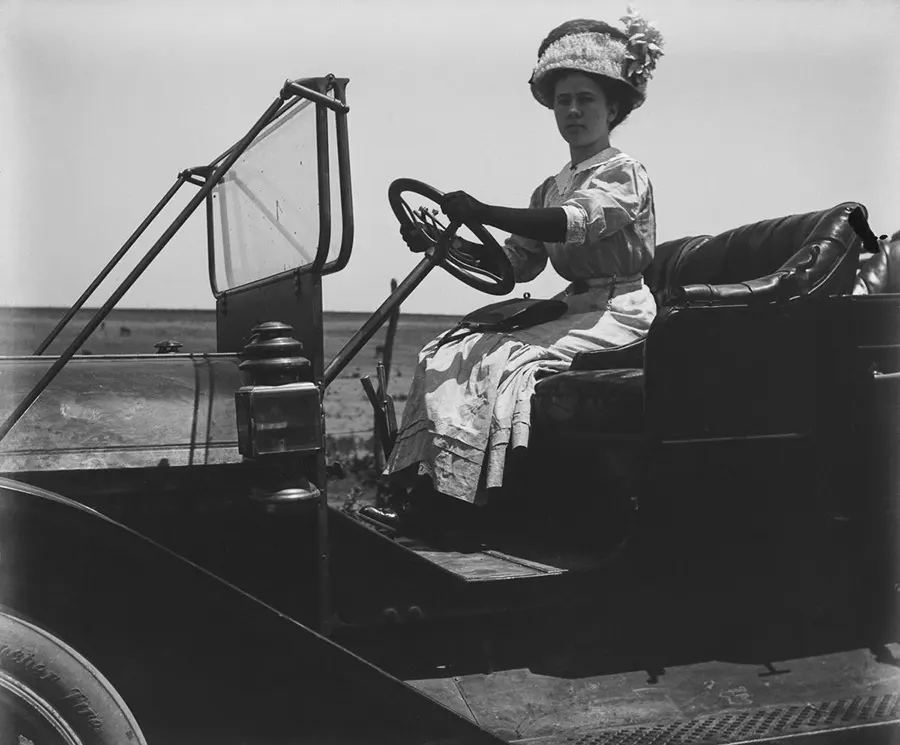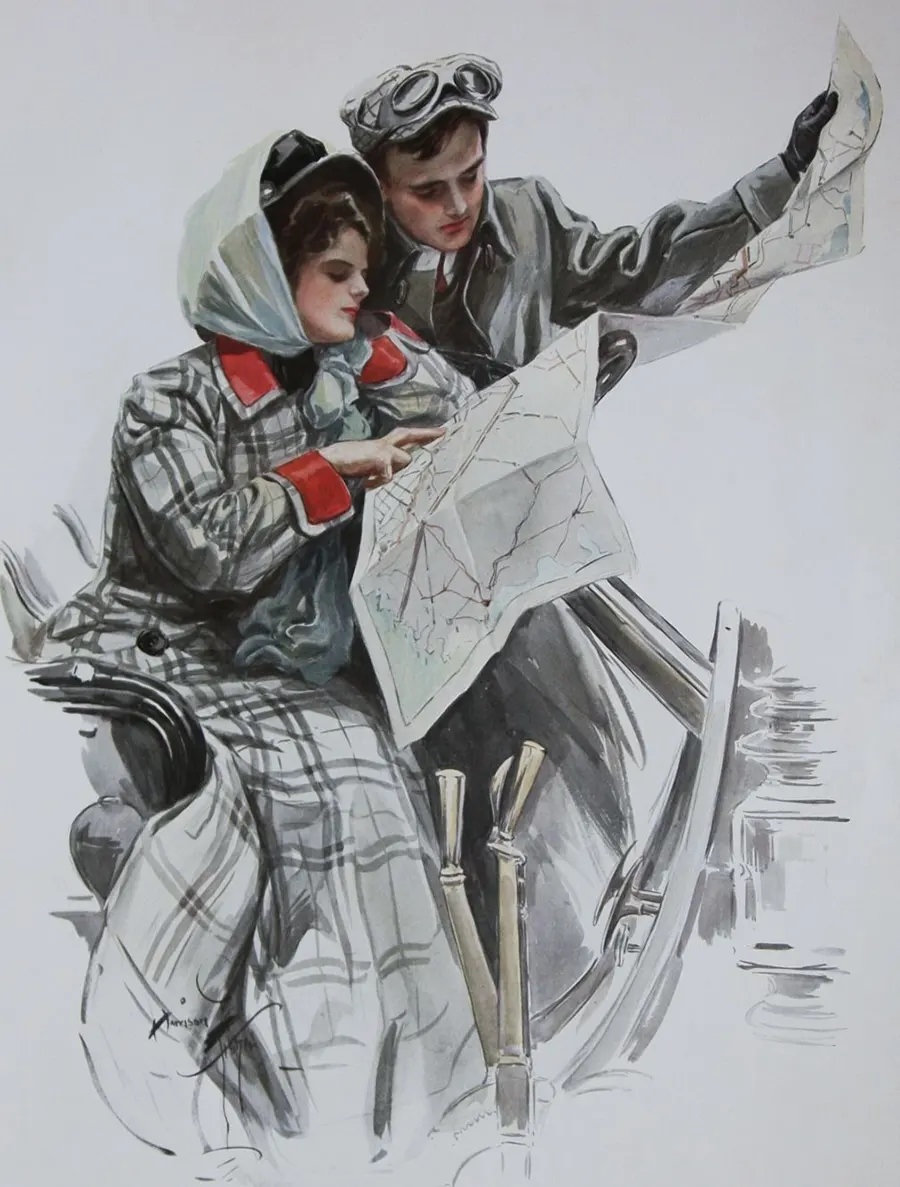Automobiles became popular among wealthy people after the 1890s. Because early cars had no roofs or doors and were mostly driven on dirt roads, motorists needed clothing that protected them from the wind, cold, and dust. Thus, motoring created both demand for protective outerwear and a social occasion to display a sartorial sense of taste. New clothing and accessories with special purposes were rapidly developed, including car rugs, overcoats, boots, and gauntlets.
Motoring from the beginning was associated with affluence and privilege, linking driving with glamor and style – an image still used to advertise products from tires to oil. Besides fur coats, which were already luxury status symbols, motoring encouraged the adoption of previously unfashionable animal skins. The 1920s saw the introduction of a new range of shaggy, primitive-looking fur coats for men, including goat, bear, wolf, jackal, and raccoon, these bulky, rugged garments remaining popular for driving open-topped sports cars. Women’s fur motoring coats were designed for comfort and style: for example, carefully matched gray squirrel skin coats might have contrasting opossum fur collars and cuffs.
In the summer, most motorists wore a loose-fitting lightweight duster or dust coat made of canvas, linen, flannel, or alpaca, usually colored off-white, gray, or beige, with elasticated or strapped cuffs on the sleeves. There was a range of protective headgear available, from peaked driving caps to conventional cloth caps to deerstalkers and other hats with ear flaps. Despite hats and veils becoming more common, some women wore peaked caps to protect their faces and hair from dust and oil. Most male drivers used goggles to shield their eyes, including convex eyeglasses with nickel or aluminum rims, an elastic strap worn around their heads, or a one-piece mica mask. In winter, these goggles also shield the eyes from cold air, which, along with other irritants, could cause serious eye infections. Many women prefer to wear veils, but some use goggles, especially serious female drivers. Early motorists also wore fur car rugs and waterproof tarpaulin-like aprons for winter; goats’ hair or fur-lined leather footmuffs and foot protectors; and some footmuffs paired with fur lap robes.




















